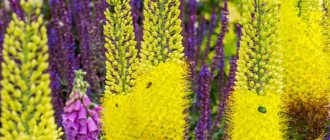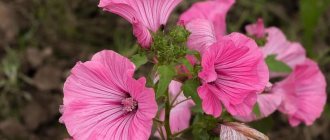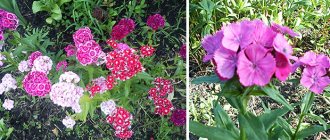Calendula or marigold is an annual plant with bright yellow or orange flowers that always face the sun. Calendula was originally grown for its medicinal properties and as a seasoning. And a little later, she became a welcome guest in flower beds, adding bright sunny colors to them.
The Mediterranean coast is considered the homeland of calendula - a moderately humid, sunny and hot climate suits the plant. But our flower growers are also familiar with calendula: planting and caring for sunny marigolds in open ground does not raise any questions.
Description of the plant
Calendula is a species of herbaceous plant belonging to the Asteraceae, or Asteraceae, family. In its natural environment, calendula is found in Western Europe, the Mediterranean and Asia.
Low, up to a maximum of 70 cm, calendula stems are covered with soft hairs. All leaves are covered with the same hairs on the back side. The texture of the inflorescence petals varies from normal to velvety, and the buds themselves at the flowering stage reach 5 cm in diameter.
In addition to medicinal properties, these flowers also exhibit reflection - they always stretch towards the sun, and are popularly called “marigolds”.
What does a calendula flower look like: description with photo
Since the 16th century, the calendula flower has been decorating gardens. The plant, up to 70 cm high, has elongated, lanceolate or oval leaves, pubescent stems and yellow or orange petals. The inner tubular and pseudolingular flowers of marigolds may be darker in color. Calendula begins to bloom in June and continues until the cold weather. Back in October, if there is no severe frost, you can see bright spots of marigold flowers among the gray grass in the area.
When is calendula planted in the ground?
Marigolds are grown only in hay. And the seeds can be planted immediately in an open area, or seedlings can be grown from them at home. The advantage of pre-germinating seedlings is that the flowers will begin to bloom in early June, which is important for gardening in cold climates. But the plants can easily be sown directly into open ground.
Marigolds are sown immediately in open ground or first in autumn, until frost begins; or from mid-spring, when the soil has already thawed. For a plant with southern ancestry, marigolds tolerate cold quite resistantly and grow already at 4 degrees Celsius, and their seeds are able to survive cold winters. Along with the beauty of the flower and its medicinal properties, its ability to survive in colder climates has made it one of the most common flowers in the world.
There is one small nuance in planting seeds in the fall - if you do not predict the onset of cold weather and sow the seeds a little earlier, so that they have time to hatch, then with the onset of cold weather the seeds will die. But, there is a little trick: make grooves in the soil for sowing in advance, and as soon as the ground freezes, sow the seeds in them and sprinkle them with previously prepared soil at room temperature.
Seed selection and preparation
First you need to decide which calendula you need. There are medicinal and decorative varieties of this plant. If you want to sow decorative calendula, there are many varieties, including low-growing, medium-growing and even tall. Low-growing varieties (height - 15-30 cm) are grown on balconies and flower beds. The bush of such plants is highly branched, the baskets are mostly double, with a diameter of up to 10 cm. Medium-sized varieties have a height of 30-50 cm and are used for various types of landscaping. Tall (from 50 to 85 cm) varieties of decorative calendula are grown mainly for bouquets and to create bright color accents in garden plots.
Calendula seeds germinate well even under the most unfavorable conditions, so there is no urgent need to subject them to any additional processing before sowing in the ground. If you still want to speed up germination and give the plants an additional boost in development, then you can soak calendula seeds in a solution of the growth stimulator Epin-extra (the solution is made following the instructions).
Calendula can actively reproduce by self-sowing, and it does this not only in the wild (in southern Europe it grows in wastelands), but also in garden plots. Having planted calendula once, you can use this feature in the future - the main thing is to ensure that the seeds do not spread throughout the entire area in the fall, otherwise next year they will sprout and interfere with the growth of other plants, like weeds.
Soil preparation
You can plan to grow marigolds only for the next season. These are the features of soil preparation at the site of the planned plantings. They begin to prepare the soil in the fall:
- The area is dug up several times to the depth of a shovel, so that the soil becomes loose and pliable to mixing.
- For one square meter of plot, about one tablespoon of phosphorus and potassium fertilizers and about four kilograms of compost are mixed into the soil.
- For clay soils, coarse sand is additionally added, approximately 7 liter bucket per square meter.
A simpler, more rustic way is to replace fertilizers with stove ash.
Calendula as green manure in the garden
Despite the fact that in one and a half months marigolds grow only 15-25 cm, the grown green mass and root residues are quite enough to destroy pathogenic microorganisms, in particular fungi, viruses and bacteria that cause late blight of nightshades, fusarium wilts, various types of mosaics, and freeing the area from nematodes, leaf-eating caterpillars, mites and wireworms.
During the growing season, calendula roots saturate the soil mixture with esters, phytoncides, tannins and other biologically active compounds that have insecticidal and fungicidal properties. The greenery of the plant laid out in the beds, decomposing, enhances the sanitizing effect of these substances. That is why marigolds are among the most effective green manures, having the properties to improve the biochemical composition of the soil in the beds.
Timing for planting calendula as green manure
The best time to sow marigolds is the end of August. Plants are planted in the beds vacated from under the main crops with the expectation that before the onset of soil frosts, the greenery will be embedded in the ground.
Cut the greens before flowering begins, approximately 1.5-2 months after the appearance of mass shoots. Plant residues are placed in compost, used as mulch or plowed into the fertile soil layer (depth 20-25 cm). Only when plowing, plant residues are not placed tightly, otherwise the structure of the soil is disturbed - the tubules where condensation accumulates are cut off.
Preparation of planting material
Seeds for sowing can be obtained in a variety of ways:
Ask your neighbors in your summer cottage, and most likely you will receive them with detailed instructions for growing and caring for them.
Choose a variety on the Internet and buy it in an online store, or in any specialized store in your city. If you can buy seeds in a regular store, it is better to use this option. To order seeds online, personal recommendations from an online store will not hurt.
Collect the seeds from the plant yourself if you are already growing them.
It's fun to experiment with marigolds: mix different varieties and observe the results of cross-pollination, collect seeds and get a variety of plants each next generation.
After everything is determined with the choice of seeds, you need to sift them. Of all the grains that you have, you need to choose dummies and the smallest seeds. You can sit and select seeds with tweezers, or you can use a faster method - pour all the seeds into a water-salt solution, and all the debris will float to the surface, while the good seeds will remain at the bottom.
Calendula after flowering
To prevent self-seeding, it is necessary to immediately break out the green shoots after flowering has ended. You can also leave a few bushes to collect seeds. The seeds are collected only after complete ripening. To do this, put a gauze bag on each flower so that the ripe seeds do not scatter on the ground.
Marigolds are annuals, so after flowering ends and seeds are collected, the bushes are destroyed. Those seeds that fell to the ground will sprout together early in the spring.
Garden calendula is an unpretentious and very beautiful plant for the summer garden. The flower is often planted along fences and paths, near recreation areas. Calendula does not take much time to care for and will decorate any garden.
Planting process
Marigolds can easily withstand cold temperatures down to -5 degrees, which allows them to be sown immediately in the open air, without wasting time on growing seedlings.
When the seeds are ready:
- Planting begins with the correct selection of the site. The area should be well lit most of the day. In the shade, flowers grow more elongated with small buds and bloom less profusely.
- The soil, prepared since last autumn, is loosened and fertilizers containing phosphorus, nitrogen and potassium are added to it.
- The fertilized area is leveled with a rake and is ready for sowing. If everything is done correctly, the site will be fertile for the next five years.
- Depending on what kind of flower pattern you want to get, the area is schematically divided into equal cells and holes are made in the corners of each cell, or you can make furrows, draw with them, or distribute them in rows. The distance between holes should be at least 40cm, and between rows about 50cm. The depth of any planting is no more than 4 cm - if you plant the seeds deeper, this will reduce the percentage of their germination.
- If seeds are sown immediately, they are distributed 2-3 seeds per hole, or 2-3 seeds in a row at a distance of about 20 centimeters from each other. They are sown no deeper than one centimeter.
- Planting seedlings follows the same pattern, except that per hole and per planting in a row there is one seedling in place of several grains.
Master class on planting calendula seedlings
So, now let’s go directly to the step-by-step photo instructions for sowing calendula seeds for seedlings:
Step 1: Place drainage at the bottom of the container.
You can use perlite, fine expanded clay, broken brick. The layer should not be too large, 1.5 cm is enough.
Step 2: Fill the container with soil.
Step 3: Moisten the soil thoroughly with clean water.
Step 4: Make holes for sowing.
The optimal depth of the pits is 2 centimeters. It is most convenient to do them with a pen, pencil, some kind of wooden stick or just your finger.
If you plant in a common container, then the distance between the holes should be about 3-4 centimeters.
Step 5: Direct planting of seedlings.
As you can see in the photo, calendula seeds are large:
Therefore, you can sow them simply with your fingers, without auxiliary tools:
Step 6: Fill the holes with soil.
Step 7: Water with clean, settled water.
Step 8: Cover the container with a lid or film.
This stage is necessary to create a mini-greenhouse, which is needed for seed germination.
Step 9: For convenience, label the container with future seedlings in some convenient way.
Growing calendula from seeds
Calendula planting. Growing from seedling grains occurs according to the following scenario:
A container for seedlings is selected and prepared. It should have drainage holes. If there are none, you need to do them yourself.
Store-bought sowing mixtures work well as soil.
The seeds are sown evenly in the prepared container and lightly sprinkled with soil.
The container is covered with film and stored at room temperature until the first shoots appear. After the first shoots appear, the film is removed.
When the shoots get stronger and produce the first couple of petals, they can be planted in separate containers.
The sprouts finally grow stronger and become ready for transplanting to the site one month after the first shoots appear.
Reproduction
Calendula (marigold) is grown as an annual crop. It reproduces only by seeds. For sowing, they use purchased seeds or harvest them from their own plants.
The collection is carried out in dry weather at the end of August or beginning of September. The best bushes are selected in advance, withered flowers with ripened seeds are collected from them. The planting material is dried in the sun for 2–3 days, turning over periodically.
Calendula seeds have a bizarre shape, similar to large marigolds. The finished seeds have a dark or light brown tint. Seeds that are greenish in color are immediately discarded - they are unlikely to sprout. Planting material can be used for 3–5 years. Seeds are stored in fabric bags or paper bags, protecting them from dampness.
Calendula reproduces well by self-sowing. If you don’t remove dried plants from the site in the fall, then in the spring, dense shoots will sprout from the seeds that have fallen into the ground. You will have to spend time weeding and removing excess shoots. It is better to control this process and prevent unnecessary sprouts from appearing in vegetable and flower beds. You should remember about crop rotation and not grow a crop for more than 3 years in one place.
Rules for caring for calendula
In order for your nails to be lush and breathe health and freshness, regular care measures are necessary:
- Timely watering and fertilizing.
- When the shoots are completely strong and are ready to soon become adult plants, sprinkle the soil at the base of its stems with mulch made from hay and chopped tree bark. Such a fur coat will help maintain moderate humidity even in dry seasons and will help cool the roots.
- Trim bushes periodically.
- Regularly weed after watering and carefully loosen the top layer of soil. This will give the roots an influx of oxygen and prevent water stagnation.
How to sow calendula before winter
Calendula grows best in full sun in nutritious, loose, moist soil. Does not like extreme heat and does not bloom well in the shade. The flowerbed is prepared in advance by digging up the soil with fertilizers: half a bucket of humus and 20–25 g of potassium sulfate and superphosphate are added per 1 m2.
Blooming calendula will decorate any corner of the garden, so prepare a flowerbed or bed for it of the required size and shape
So that just before winter you can just pour the seeds into the ground and sprinkle them, when digging, part of the dry soil is stored, and planting holes or furrows are also immediately prepared. Their depth is about 4 cm, and the distance between future plants is from 15 to 25 cm.
The more space the calendula gets, the more luxuriantly it grows and the more beautifully it blooms, so a 60 x 30 cm pattern is also used for decorative purposes.
To prevent the furrows from collapsing before sowing, you can temporarily cover the flowerbed with film. Calendula seeds are large; they are not prepared in any way for autumn sowing; they are sown dry. In the fall, sow twice as thick as required (excess shoots are removed or replanted in the spring). Having spread out the seeds, sprinkle them with prepared dry soil. In cold regions, you can add mulch (humus, peat, straw), but usually you don’t need to do anything else, but calmly wait for spring.
Diseases and pests
Basically, marigolds are resistant to all kinds of diseases. The most dangerous pest among insects for them is aphids. In the fight against it, ordinary insecticides and loosening the soil around the stems will help to destroy the paths of the ants that brought this aphid.
Among fungal diseases, you should be wary of powdery mildew and circosporosis. The main cause of diseases is stagnation of water and high humidity. It is treated by eliminating the sickest plants. Treating all bushes with fungicides will also bring a beneficial effect.
Popular types
Of the entire diversity of the genus, two popular species have gone to the general public: field and medicinal calendula.
Field
Wild subspecies. Loves to grow in abandoned areas and front gardens. Extremely tenacious, the bushes grow up to 30cm in height and bloom in small yellow inflorescences.
Medicinal
Nowadays, medicinal calendula is grown on an industrial scale:
Substances contained in the plant promote wound healing, disinfect them, destroy bacteria, relieve fever and painful inflammation. It is not surprising that in the times of Ancient Greece miraculous qualities were attributed to it.
If it is necessary to rid the body of excess bile, then calendula infusion has strong choleretic properties.
A tincture from the plant will help cure severe sore throat.
In the form of an ointment based on calendula, it promotes the healing of burns, bruises, and can cope with the disinfection of serious wounds.
Also, the tincture can help fight gastrointestinal infections and liver inflammation.
Collecting seeds
Seeds can be purchased at any flower shop or collected yourself. Harvesting begins when the calendula is fully ripe. Mostly falls at the end of August and beginning of September. If the plant is planted as a medicinal raw material, then it is necessary to pick off the inflorescence after it has fully opened. After the flower fades, a gauze bag is put on it, where the finished grains fall. The seeds look gray-brown and resemble the letter “C” in appearance.
The next step is to dry the planting material. At home, a small box is used for these purposes. Next, they are placed in paper envelopes or boxes and stored in a dry, ventilated area with minimal humidity. To maintain similarity, the shelf life of calendula seeds is 1-2 years.











